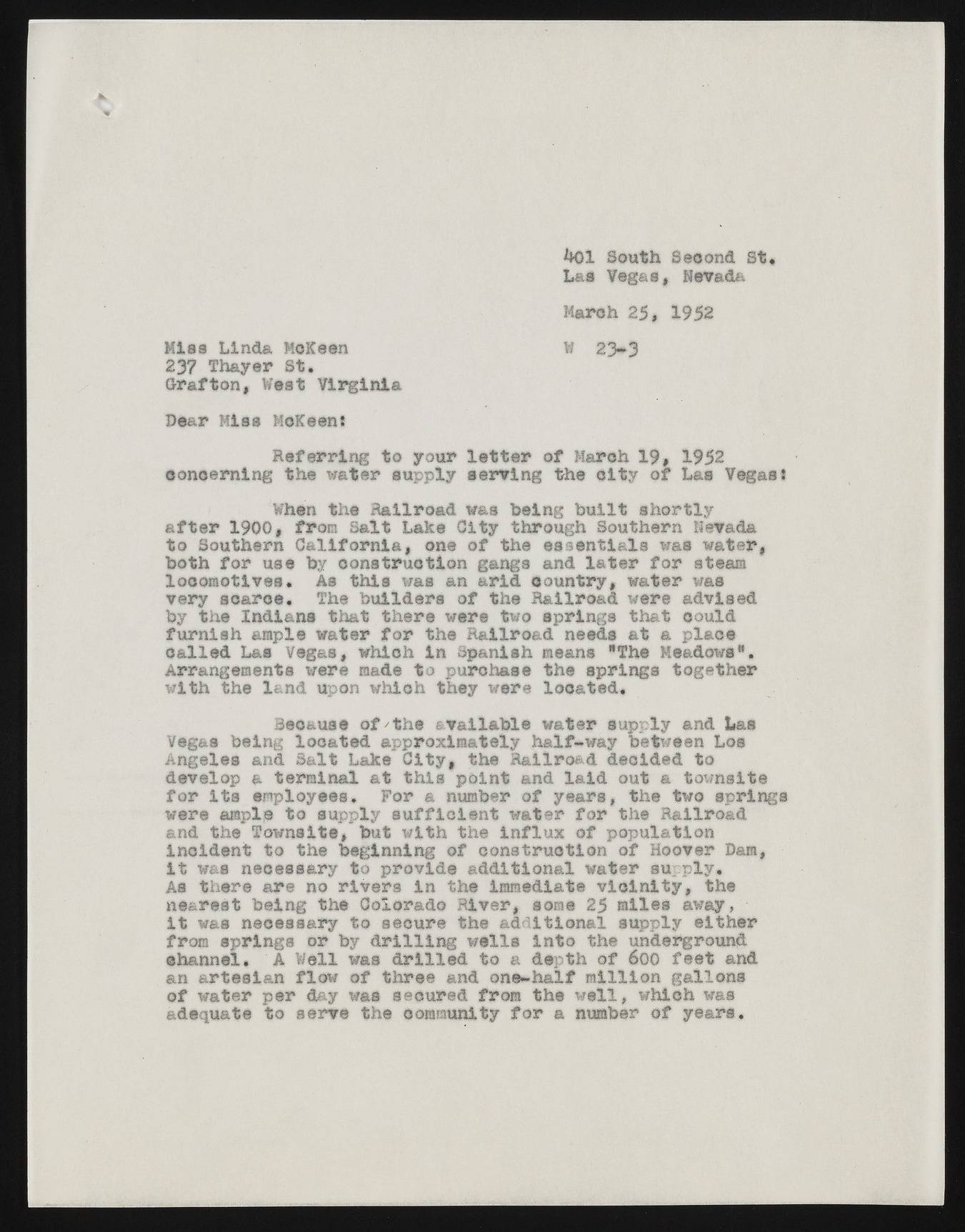Copyright & Fair-use Agreement
UNLV Special Collections provides copies of materials to facilitate private study, scholarship, or research. Material not in the public domain may be used according to fair use of copyrighted materials as defined by copyright law. Please cite us.
Please note that UNLV may not own the copyright to these materials and cannot provide permission to publish or distribute materials when UNLV is not the copyright holder. The user is solely responsible for determining the copyright status of materials and obtaining permission to use material from the copyright holder and for determining whether any permissions relating to any other rights are necessary for the intended use, and for obtaining all required permissions beyond that allowed by fair use.
Read more about our reproduction and use policy.
I agree.Information
Digital ID
Permalink
Details
Member of
More Info
Rights
Digital Provenance
Publisher
Transcription
March 25, 1952 Miss Linda McKean ¥ 23*3 237 Thayer St, Grafton, West Virginia. Dear Miss MoKeens Keferring to your letter of Maroh 19, 1952 concerning the water supply serving the city of Las Vegas* When the Railroad was being built shortly after 1900, from Salt Lake 01ty through Southern Nevada to Southern California, one of the essentials was water, both for use by construction gangs and later for steam locomotives. As this was an arid country, water was very scarce, The builders of the Railroad were advised by the Indians that there were two springs that could furnish ample water for the Railroad needs at a place called Las Vegas, which in Spanish means "The Meadows*. Arrangements were made to purchase the springs together with the land upon which they were located. Because of/the available water supply and Las Vegas being located approximately half-way between Los Angeles and Salt Lake City, the Railroad decided to develop a terminal at this point and laid out a townsite for its employees. For a number of years, the two springs were ample to supply sufficient water for the Railroad and the Townsite, but with the Influx of population incident to the beginning of construction of Hoover Dam, it was necessary to provide additional water supply. As there are no rivers in the immediate vicinity, the nearest being the Colorado River, some 25 miles away, it was necessary to secure the additional supply either from springs or by drilling wells Into the underground channel# A Well was drilled to a depth of 600 feet and an artesian flow of three and one-half million gallons of water per day was secured from the well, which was adequate to serve the community for a number of years. 4Q1 South Second St* Las Vegas, Nevada

